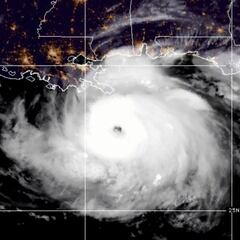When is the next possible tropical storm in the Atlantic according to the National Hurricane Center?
So far 2022 has been fairly quiet for named storms, but experts are warning of a major tropical storm forming off the coast of the Lesser Antilles.


Experts predicted a busy Atlantic hurricane season for 2022 but so far there have been very few tropical storms of note. This August is one of only three on record, along with 1961 and 1997, to have not recorded a single named storm.
In fact across the whole hurricane season, which began at the start of June, there have been just three named storms, classified as an organised weather system with maximum sustained winds of no less than 39mph.
However it looks like that quiet spell is coming to an end as we head into September, typically the busiest month of hurricane season. This week an area of thunderstorms around 875 miles east of the Lesser Antilles has formed, according to the National Hurricane Center (NHC). Low pressure is expected to develop in the coming days and could escalate.
Hurricane season is heating up! NHC is monitoring 3 areas for tropical development during the next 5 days in the Atlantic basin. See here for details: https://t.co/m9946DoYYi pic.twitter.com/VFbas84xIN
— National Hurricane Center (@NHC_Atlantic) August 31, 2022
“We will have to monitor the situation in the next couple of days to see where it develops in order to know more if it remains at sea,” said Maria Torres, NHC spokeswoman, but she believes the chance of it reaching the United States coast remains “very low.”
Forecasters at the NHC say that there an 80% chance that it will become a tropical system in the next five days, possibly heralding the start of a spell of intense storm activity. If it reaches named status it will be known as Tropical Storm Danielle, following on from Alex, Bonnie and Colin earlier this year.
Hurricane season may be moving earlier, study suggests
Despite the quiet start to this year’s season, a study released earlier this month found that storms are actually happening earlier on average. Since 1979, the first storms of the Atlantic hurricane season have occurred around five day earlier each decade.
The Nature Communications study draws a link between the early onset of hurricane season and the warming of the oceans, which is heating up conditions in the Atlantic during the spring.
“These changes are taking place because of a more favorable environment for tropical cyclone formation in the western Atlantic, Gulf of Mexico and western Caribbean in the late spring,” said Ryan Truchelut, president of private forecasting firm Weather Tiger and co-author of the study.
Related stories
“The environmental changes are almost exclusively driven by warming ocean temperatures in this region, and not other environmental changes like shear or humidity,” he said.
This is of particular concern for residents in areas typically affected by hurricanes and tropical cyclones. The study states that early-season cyclones are more likely to reach land and cause disproportionate damage to populated landmasses.

